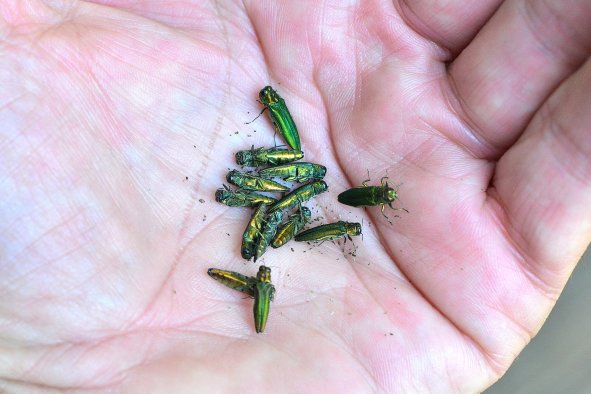In a rare case, a black bear in Connecticut has tested positive for rabies, sparking a warning from state wildlife officials.
The bear was a wild female adult discovered in Canton, Connecticut, in February 2023. Like other bears, it should have been hibernating during the winter months. However, due to mobility issues on the left side of its body, the bear was seen falling over, lying down, and not responding to human presence, according to a new paper in the journal Microbiology Resource Announcements.
The bear was observed for 24 hours before being euthanized by a Connecticut conservation officer. Its body was taken to the Connecticut Veterinary Medical Diagnostic Laboratory (CVMDL) at the Unversity of Connecticut's College of Agriculture, Health and Natural Resources for a post-mortem.
After the CVMDL sequenced the bear's brain tissue during the necropsy, they discovered that it was infected with rabies. This was only the second bear the lab had encountered with the virus.
The Connecticut Department of Energy and Environmental Protection (DEEP) has advised the public to avoid any animal that "appears to be distressed, which may include symptoms like stumbling, staggering, walking in circles, dragging a limb or the hind end, or otherwise acting strangely," according to a statement from the University of Connecticut.
Rabies is a viral disease that affects the central nervous system of mammals, causing the inflammation of the brain. The virus is typically transmitted through the saliva of infected animals via bites, scratches, or even mucous membranes and open wounds. It is almost always fatal once symptoms appear, which generally manifest after around 2–3 months and can initially include fever, headache and weakness, progressing to agitation, anxiety, hallucinations, a fear of water, excessive salivation, and lack of coordination.
If an animal displays neurological symptoms, such as stumbling and falling over, then scientists will first test for rabies. If the test comes back positive, CVMDL does not proceed with a full necropsy to protect staff.
"We rule out rabies because we don't want to do a necropsy that could expose people unnecessarily," Guillermo Risatti, CVMDL director and professor at the University of Connecticut, said in the statement. "So, once we detect rabies, that's it. We don't do anything else with the carcass."
The CVMDL scientists sequenced the entire genome of the rabies virus found inside the bear to compare it with a gene bank of other sequences from animals infected with rabies across the world. They found that the virus in the bear—which was the only bear sample on the whole database—most closely resembled a virus sequence from a raccoon in New England.
By comparing these strains of rabies, scientists can investigate how the virus spreads between animals in certain areas.
"That's the value—to see what the virus looks like and be able to distinguish a new virus coming into the area," Risatti said. "All of the sequencing is done by us, here in house. So that is the value. We have created a sequencing lab inside a diagnostic lab that is allowing us to dig more into what is going on."
Only 1 to 3 cases are reported in humans in the United States annually. If a human contracts rabies, they need to receive post-exposure prophylaxis as soon as possible, which can be up to 100 percent effective at preventing the disease. Around 60,000 people receive this post-exposure prophylaxis in the U.S. every year.
Humans most at risk are those living in areas where wildlife that commonly contract rabies, including bats, raccoons, skunks, and foxes, are common. While this case of rabies in a bear is rare, it may become more common in the future, as sightings of black bears in Connecticut have increased lately.
Nine bears were submitted to the CVMDL for testing in 2023 alone, compared to seven between 2019 and 2022.
The DEEP advises calling the local animal control officer or police department if you spot a potentially rabid animal, staying well clear of it, and definitely not attempting to pick it up.
Do you have a tip on a science story that Newsweek should be covering? Do you have a question about rabies? Let us know via science@newsweek.com.
Disclaimer: The copyright of this article belongs to the original author. Reposting this article is solely for the purpose of information dissemination and does not constitute any investment advice. If there is any infringement, please contact us immediately. We will make corrections or deletions as necessary. Thank you.



